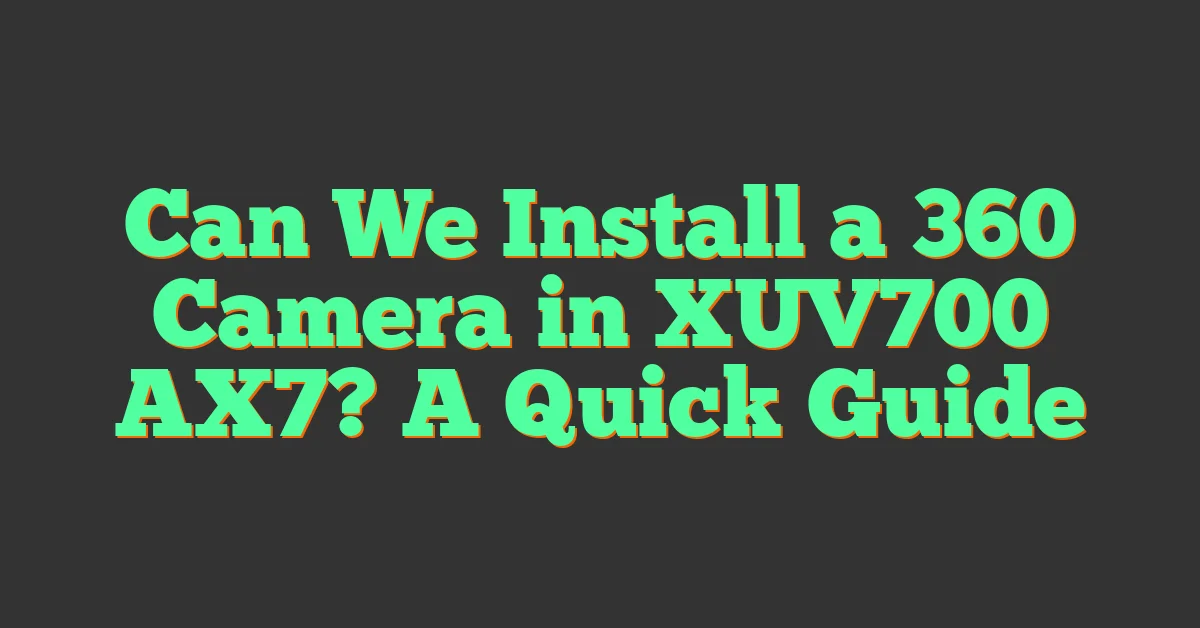If you’re looking to capture stunning 360-degree panoramic images, you don’t necessarily need to invest in an expensive camera or software. There are plenty of free 360 panorama camera apps available that allow you to take high-quality panoramic images with your smartphone. In this article, we’ll explore some of the best free 360 panorama camera apps and how you can use them to create beautiful panoramic images.
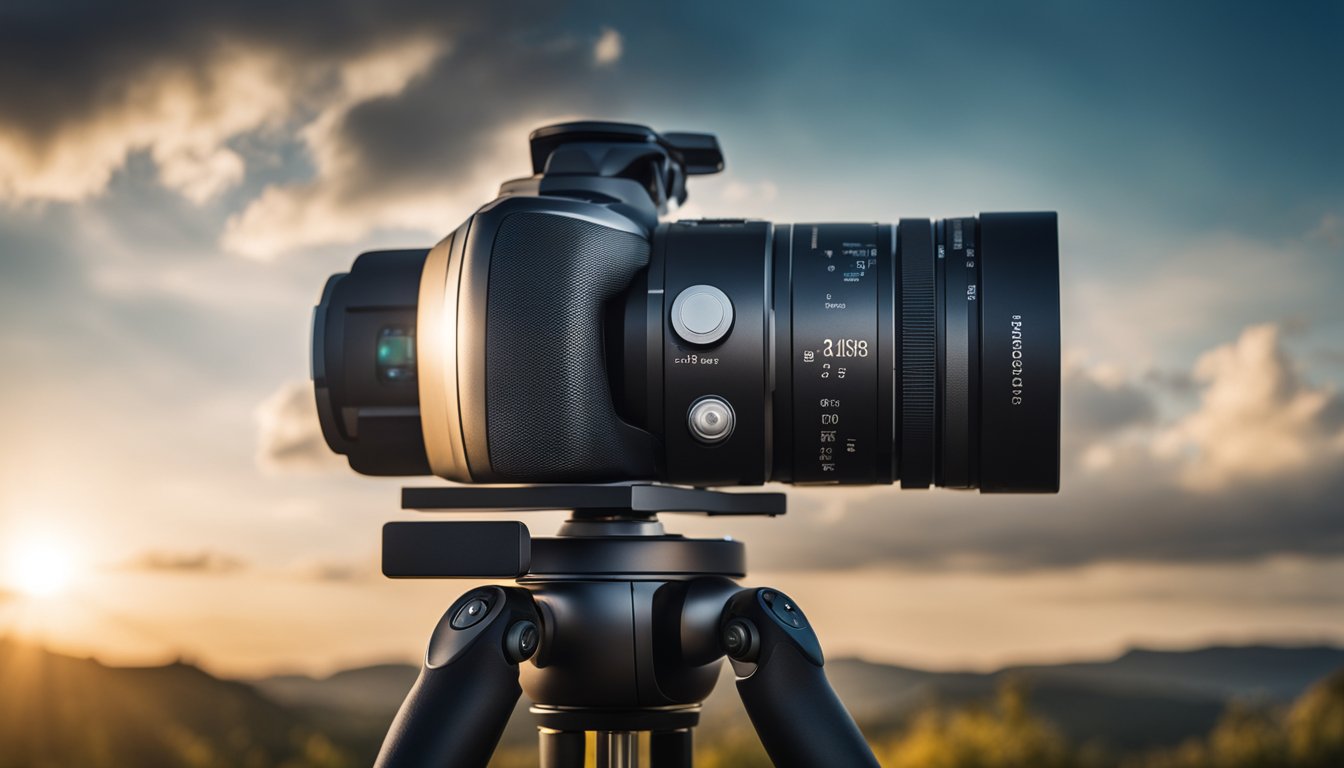
Understanding 360 Panorama Cameras can be a bit tricky, but it’s essential to understand how they work to take full advantage of their capabilities. 360 Panorama Cameras work by taking multiple photos and stitching them together to create a seamless panoramic image. The camera rotates on its axis, capturing a full 360-degree view, which is then stitched together by software to create a panoramic image. With the right app, you can create a 360-degree panorama with just a few taps on your smartphone.
Choosing a Free 360 Panorama Camera App can be overwhelming, but we’ve done the research for you. We’ve compiled a list of the best free 360 panorama camera apps so that you can start creating beautiful panoramic images right away. With these apps, you can take panoramic photos of landscapes, cityscapes, and even interiors, and share them with your friends and family.
Key Takeaways
- You don’t need an expensive camera or software to capture stunning 360-degree panoramic images.
- 360 Panorama Cameras work by taking multiple photos and stitching them together to create a seamless panoramic image.
- There are several free 360 panorama camera apps available that allow you to create beautiful panoramic images with your smartphone.
Understanding 360 Panorama Cameras
https://www.youtube.com/watch?v=xqWkJJOcU4g&embed=true
If you are looking for a way to capture your surroundings in a unique and immersive way, a 360-degree camera might be just what you need. These cameras are designed to capture a full 360-degree view of your surroundings, allowing you to create stunning panoramic photos and videos that can be viewed in virtual reality (VR) or on a traditional screen. In this section, we will explore the basics of 360-degree cameras and the evolution of VR technology in cameras.
The Basics of 360-Degree Cameras
A 360-degree camera works by using multiple lenses to capture a full 360-degree view of your surroundings. These lenses are typically positioned in a circular or spherical arrangement, allowing them to capture a full panoramic view. The camera then stitches together the images from each lens to create a single seamless image or video.
To view the resulting panoramic image or video, you can use a VR headset or a traditional screen. When viewed in VR, the image or video is mapped onto a sphere that surrounds the viewer, creating a fully immersive experience. When viewed on a traditional screen, the image or video can be panned and zoomed to explore the full 360-degree view.
One important feature of 360-degree cameras is the gyroscope. This sensor detects the orientation of the camera and adjusts the view accordingly, allowing you to look around the panoramic view simply by moving the camera. This feature is especially important when viewing the resulting image or video in VR, as it allows for a fully immersive experience.
Evolution of VR Technology in Cameras
360-degree cameras have been around for several years, but it was the rise of VR technology that really brought them into the mainstream. As VR headsets became more popular, the demand for immersive content grew, and 360-degree cameras became an essential tool for creating this content.
Today, there are many different 360-degree cameras available, ranging from high-end professional models to affordable consumer models. Some cameras are designed specifically for VR content creation, while others are more general-purpose cameras that happen to have 360-degree capabilities.
Overall, 360-degree cameras are a powerful tool for capturing and sharing immersive panoramic views. Whether you are a professional photographer or just looking for a new way to capture your surroundings, a 360-degree camera is definitely worth considering.
Choosing a Free 360 Panorama Camera App
https://www.youtube.com/watch?v=Ngho7erG2cI&embed=true
If you want to take stunning 360-degree photos and virtual tours, you need to choose the right app. Fortunately, there are plenty of free 360 panorama camera apps available for both Android and iOS devices. Here are some features to look for in free apps and our top picks:
Features to Look for in Free Apps
When choosing a free 360 panorama camera app, you should look for the following features:
- User-friendly interface: The app should have an easy-to-use interface that allows you to take photos and create virtual tours quickly and easily.
- High-quality output: The app should produce high-quality 360-degree photos and virtual tours that are clear and detailed.
- Compatibility with your mobile phone: The app should be compatible with your mobile phone’s operating system (Android or iOS).
- Easy sharing: The app should allow you to easily share your photos and virtual tours with others.
- Additional features: Some apps offer additional features, such as the ability to add filters or edit your photos.
Top Free 360 Camera Apps for Android and iOS
Here are our top picks for free 360 panorama camera apps:
Photaf Panorama: This app is available for both Android and iOS devices and offers an easy-to-use interface, high-quality output, and the ability to share your photos easily. It also offers additional features such as the ability to add filters and edit your photos.
Cardboard Camera: This app is available for both Android and iOS devices and is designed specifically for creating virtual reality (VR) photos. It offers an easy-to-use interface and high-quality output.
Google Street View: This app is available for both Android and iOS devices and allows you to take 360-degree photos and add them to Google Maps. It offers an easy-to-use interface and high-quality output.
Overall, when choosing a free 360 panorama camera app, you should look for an app that is user-friendly, produces high-quality output, and is compatible with your mobile phone. Photaf Panorama, Cardboard Camera, and Google Street View are all excellent options that offer these features and more.
How to Capture Perfect 360 Panoramas
https://www.youtube.com/watch?v=6wxpBfORg0g&embed=true
Capturing a perfect 360-degree panorama can be a challenging task. However, with the right technique and equipment, you can create stunning panoramic photos. In this section, we will cover some tips and tricks for shooting 360-degree photos and overcoming common challenges.
Tips for Shooting 360-Degree Photos
Use a tripod: A tripod is essential for capturing high-resolution panoramic photos. It helps to keep the camera steady and level, which is crucial for stitching the images together.
Shoot in portrait mode: Shooting in portrait mode allows you to capture more of the scene in a single frame. It also helps to minimize distortion and reduce the number of images you need to capture.
Overlap your shots: Overlapping your shots is essential for creating a seamless panorama. Aim to overlap each shot by at least 30%. This will help the stitching software to align the images correctly.
Use manual settings: Using manual settings will give you more control over the exposure and focus of your shots. This is especially important when shooting in challenging lighting conditions.
Check your settings: Before you start shooting, double-check your camera settings. Make sure you are shooting in RAW mode and that your white balance and ISO settings are appropriate for the scene.
Overcoming Common Challenges
Dealing with moving objects: Moving objects can be a challenge when shooting panoramic photos. Try to avoid including moving objects in your shots, or use a faster shutter speed to freeze the motion.
Uneven lighting: Uneven lighting can cause problems when stitching your images together. Try to shoot when the lighting is even, or use bracketing to capture multiple exposures of the same scene.
Distortion: Distortion can be a problem when shooting with a wide-angle lens. To minimize distortion, try to keep your camera level and avoid tilting it up or down.
Stitching errors: Stitching errors can occur when the software is unable to align the images correctly. To avoid this, make sure you overlap your shots by at least 30%, and use a tripod to keep the camera steady.
By following these tips and overcoming common challenges, you can capture stunning 360-degree panoramas. Remember to take your time and experiment with different techniques until you find what works best for you.
Editing and Enhancing Panoramic Images
https://www.youtube.com/watch?v=aQoH7j1yDKQ&embed=true
Capturing a 360-degree panoramic image is just the first step in creating an immersive visual experience. To truly make your panoramic images stand out, you need to edit and enhance them using the right tools. In this section, we’ll explore some of the best editing tools for 360 imagery and provide tips for creating high-quality panoramic pictures.
Using Editing Tools for 360 Imagery
Editing tools for 360-degree panoramic images can help you adjust the exposure, color balance, and other settings to create stunning images. Some of the most popular editing tools for panoramic images include Adobe Photoshop, Lightroom, and GIMP. These tools allow you to adjust the brightness, contrast, and saturation of your images, as well as crop and resize them to fit your needs.
When editing your panoramic images, it’s important to keep in mind the high resolution of these images. Panoramic images are typically saved in JPEG format, which can result in loss of quality. To avoid this, make sure to save your images in the highest possible resolution and use editing tools that can handle high-resolution images.
Creating High-Quality Panoramic Pictures
Creating high-quality panoramic pictures requires attention to detail and a good eye for composition. Here are some tips to help you create stunning panoramic images:
- Use a tripod: To ensure that your images are sharp and free of blur, use a tripod to keep your camera steady.
- Plan your shots: Before you start taking pictures, plan out your shots to ensure that you capture the entire scene.
- Overlap your images: When taking pictures for a panoramic image, overlap each image by at least 30% to ensure that they stitch together seamlessly.
- Use a wide-angle lens: A wide-angle lens can help you capture more of the scene in a single shot.
- Adjust your exposure: When taking panoramic images, the exposure can vary from one part of the scene to another. Adjust your exposure settings to ensure that the entire scene is properly exposed.
By following these tips and using the right editing tools, you can create high-quality panoramic images that are sure to impress.
Creating Virtual Tours with 360 Panoramas
https://www.youtube.com/watch?v=ennYbERPjbU&embed=true
If you’re looking to create a virtual tour, you’ll need a 360 panorama camera. Once you have captured your 360-degree photos, you can use virtual tour creator software to turn them into an interactive experience for your audience.
Virtual Tour Creator Software
There are many virtual tour creator software options available, both free and paid. Some popular free options include 360° Virtual Tour Creator, Momento360, and Panoraven. These software programs allow you to upload your 360-degree photos and create a virtual tour that your audience can navigate through.
When choosing a virtual tour creator software, consider the features that are important to you. Some software programs allow you to incorporate hotspots and interactive elements, while others may have limitations on the number of photos you can upload.
Incorporating Hotspots and Interactive Elements
Hotspots are interactive elements that allow your audience to interact with your virtual tour. They can be used to provide additional information about a specific area or object within the tour, or to link to other areas of the tour.
Many virtual tour creator software options allow you to incorporate hotspots into your tour. Some software programs even allow you to add multimedia elements, such as videos or audio recordings, to your hotspots.
When incorporating hotspots and interactive elements into your virtual tour, consider the user experience. Make sure that the hotspots are easy to navigate and that they provide valuable information to your audience.
In conclusion, creating a virtual tour with 360 panoramas is a great way to showcase a space or location. With the right virtual tour creator software and the incorporation of hotspots and interactive elements, you can create an engaging and informative experience for your audience.
Leveraging Social Media Platforms
https://www.youtube.com/watch?v=e5dqD0Bol_A&embed=true
Social media platforms offer a great opportunity to share your 360 panoramas with a wider audience. Here are some ways to leverage social media platforms for sharing your 360 panoramas.
Sharing Panoramas on Facebook and Twitter
Facebook and Twitter are two of the most popular social media platforms that support 360-degree panoramas. Sharing your 360-degree panoramas on these platforms is easy. Simply upload your panorama to Facebook or Twitter and let your followers enjoy the immersive experience.
On Facebook, you can upload your 360-degree panorama as a regular photo or video. Once uploaded, Facebook will automatically recognize the image as a 360-degree panorama and allow users to explore it in full 360 degrees. You can also tag your friends in the panorama and add a caption to describe the scene.
On Twitter, you can upload your 360-degree panorama as a regular photo or video as well. However, Twitter does not support 360-degree panoramas natively. To make your panorama 360-degree compatible, you can use a third-party service like Momento360 to convert your panorama into a format that Twitter can recognize.
Embedding 360 Images on Social Media
Another way to share your 360-degree panoramas on social media is by embedding them on your website or blog. Most social media platforms allow you to embed 360-degree panoramas directly into your posts or pages.
To embed your 360-degree panorama on social media, you can use a third-party service like Kuula or Momento360. These services allow you to upload your panorama and generate an embed code that you can copy and paste into your social media post or page.
By embedding your 360-degree panoramas on social media, you can provide your followers with an immersive experience that they can explore right from their social media feed. This can help increase engagement and drive more traffic to your website or blog.
In conclusion, leveraging social media platforms is a great way to share your 360-degree panoramas with a wider audience. By following the steps outlined above, you can easily share your panoramas on Facebook and Twitter, as well as embed them on your website or blog. So, start sharing your panoramas today and let your followers experience the immersive world of 360-degree photography.
Integrating Panoramas with Google Services
https://www.youtube.com/watch?v=iL67eGBS3Ic&embed=true
Google Street View is a popular service that allows users to explore different locations from around the world. By uploading your 360-degree panoramas to Google Street View, you can share your panoramas with the world and allow others to explore your favorite locations.
Uploading to Google Street View
To upload your panoramas to Google Street View, you will need to create a Google account and download the Google Street View app. Once you have created your account and downloaded the app, you can upload your panoramas directly from your phone.
To upload your panoramas, open the Google Street View app and tap on the camera icon in the bottom right corner. From here, you can select the panorama you want to upload and add it to your profile. You can also add a title, description, and location to your panorama to make it easier for others to find.
Enhancing Visibility with Google Cardboard
Google Cardboard is a low-cost virtual reality headset that allows you to experience your panoramas in a whole new way. By using Google Cardboard, you can immerse yourself in your panoramas and explore them in a more interactive way.
To use Google Cardboard, you will need to download the Google Cardboard app and insert your phone into the cardboard headset. Once you have inserted your phone, you can start exploring your panoramas in virtual reality.
By using Google Street View and Google Cardboard, you can share your panoramas with the world and allow others to explore your favorite locations in a more immersive way. So why not start creating your own panoramas today and share them with the world?
Exploring Free VR Experiences
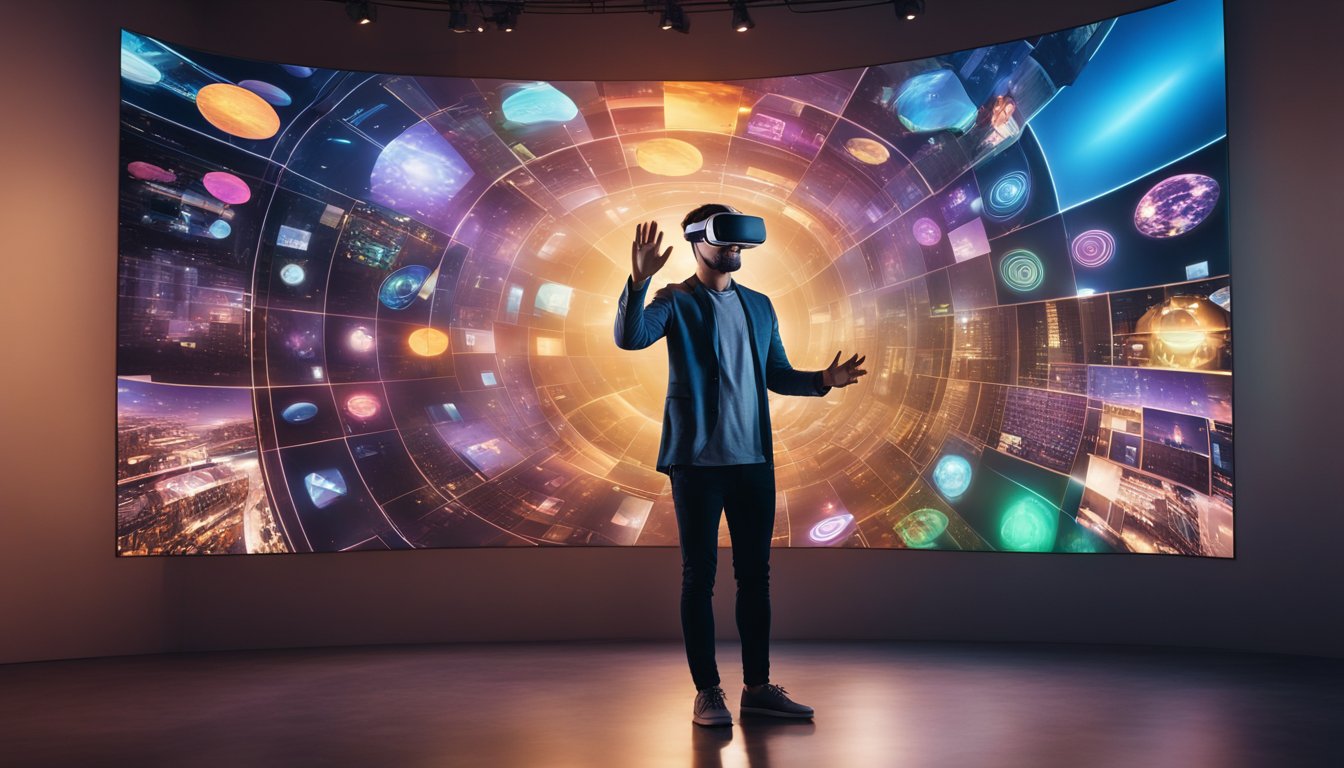
Are you interested in exploring the world of virtual reality but don’t want to spend a lot of money on expensive equipment and software? Luckily, there are many free VR experiences available online that you can enjoy with just a few clicks.
Finding Free VR Content Online
There are many websites that offer free VR content, including 3D images and videos that you can view using a VR headset. Some popular websites include Sketchfab, Google Arts & Culture, and YouTube VR.
On these websites, you can find a wide range of VR content, from virtual tours of famous landmarks to immersive art installations. You can search for content by keyword, category, or popularity, and many of the websites allow you to filter by VR compatibility.
Compatible VR Headsets for Free Experiences
To enjoy these free VR experiences, you will need a VR headset that is compatible with your device. Some popular VR headsets that are compatible with many devices include the Google Cardboard, Samsung Gear VR, and Oculus Go.
Many of these headsets are affordable and easy to use, and they allow you to experience VR content in a more immersive way than just viewing it on a screen. Some headsets even come with their own free VR content, such as games and experiences.
Overall, exploring free VR experiences is a great way to dip your toes into the world of virtual reality without breaking the bank. With so many websites and VR headsets available, you can find a wide range of content to suit your interests and preferences.
Real Estate and 360 Panorama Cameras
https://www.youtube.com/watch?v=dh3FQJ8XGmI&embed=true
Are you a real estate agent looking for a way to stand out in a crowded market? Virtual tours are becoming increasingly popular among home buyers, and 360 panorama cameras are the perfect tool to create them. With a 360 camera, you can capture every angle of a property and create an immersive virtual tour that allows potential buyers to feel like they are actually walking through the home.
Boosting Property Listings with Virtual Tours
Virtual tours are an excellent way to showcase a property and give potential buyers a better sense of what it looks like. By using a 360 panorama camera, you can create a virtual tour that is both engaging and informative. This can be a huge advantage when it comes to selling a property, as it allows buyers to get a better sense of the space and layout before they even step foot inside.
Not only do virtual tours help to sell properties, but they can also save time and money. By creating a virtual tour, you can reduce the number of in-person showings required, which can save you time and money. Additionally, virtual tours can be shared online, making it easier to reach a wider audience.
360 Cameras for Home Inspections
360 panorama cameras are not just useful for creating virtual tours. They can also be used for home inspections. By using a 360 camera, you can capture every angle of a property and identify any potential issues that may need to be addressed. This can be especially helpful when it comes to inspecting hard-to-reach areas, such as crawl spaces or attics.
In addition to identifying potential issues, 360 cameras can also be used to document the condition of a property before and after repairs or renovations. This can be helpful for insurance purposes or for keeping track of any changes made to the property over time.
In conclusion, 360 panorama cameras are a valuable tool for real estate agents and home inspectors alike. By using a 360 camera, you can create engaging virtual tours that help to sell properties and save time and money. Additionally, 360 cameras can be used for home inspections and documenting the condition of a property over time.
Technical Aspects of 360 Cameras
https://www.youtube.com/watch?v=BMI2_Fjf3ws&embed=true
If you’re interested in capturing 360 imagery, it’s important to understand the technical aspects of 360 cameras. In this section, we’ll discuss two key aspects of 360 cameras: Understanding Camera Specifications and Seamless Image Stitching Techniques.
Understanding Camera Specifications
When choosing a 360-degree camera, there are several specifications to consider. Here are some of the most important ones:
- Resolution: High-resolution cameras capture more detail and produce clearer images. Look for cameras with at least 4K resolution for the best results.
- Field of View: The wider the field of view, the more of the scene the camera can capture. Look for cameras with at least 180-degree field of view.
- Lens Aperture: A wider lens aperture allows more light to enter the camera, resulting in better low-light performance. Look for cameras with a lens aperture of f/2.0 or lower.
- Image Stabilization: This feature helps reduce camera shake and produces smoother footage. Look for cameras with built-in stabilization.
- Battery Life: Consider how long the camera can operate on a single charge, especially if you plan to use it for extended periods.
Seamless Image Stitching Techniques
One of the most important aspects of 360 cameras is their ability to seamlessly stitch together multiple images or videos to create a 360-degree image. There are several techniques used to achieve this:
- Optical Flow: This technique uses algorithms to analyze the movement of objects in the scene and align the images accordingly. This produces seamless stitching even when there are moving objects in the scene.
- Feature Matching: This technique matches key features in the images, such as corners or edges, to align them and create a seamless image.
- Depth Mapping: This technique uses depth information to align the images and create a seamless image. This is particularly useful for objects that are closer to the camera.
When choosing a 360 camera, look for one that uses advanced stitching techniques to produce seamless images. This will ensure that your 360 imagery looks professional and high-quality.
Remember, understanding the technical aspects of 360 cameras is important when choosing the right camera for your needs. Consider the specifications and stitching techniques to ensure that you choose a camera that will produce the best results for your 360 imagery.
Compatibility with Operating Systems
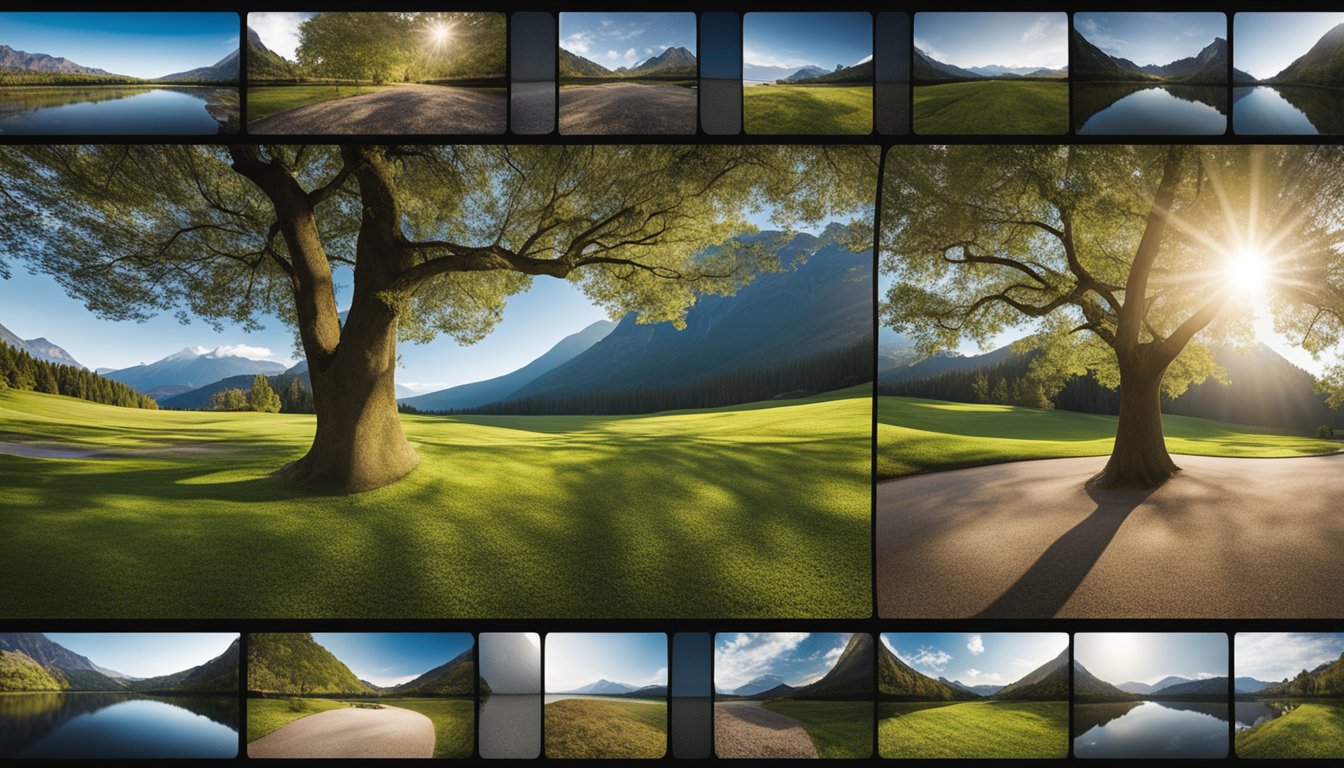
When looking for a free 360 panorama camera, it’s important to consider the compatibility of the camera with your operating system. Most free 360 panorama cameras support multiple operating systems, including Android, iOS, iPadOS, macOS, and Windows. Here are some things to keep in mind when choosing a camera based on operating system compatibility.
Support for Android and iOS Devices
If you’re looking for a free 360 panorama camera that supports Android and iOS devices, you’re in luck. Many free 360 panorama cameras offer apps that are compatible with both Android and iOS devices. These apps are usually available for download from the Google Play Store and the Apple App Store.
Some free 360 panorama cameras offer additional features for Android and iOS devices, such as the ability to control the camera remotely using your smartphone or tablet. If you plan on using your free 360 panorama camera with your Android or iOS device, be sure to check if the camera you’re interested in supports these features.
Desktop Software for macOS and Windows
In addition to mobile apps, some free 360 panorama cameras also offer desktop software for macOS and Windows. This software allows you to edit your 360-degree photos and videos on your computer.
When choosing a free 360 panorama camera based on desktop software compatibility, be sure to check the system requirements for the software. Some software may require a powerful computer with a dedicated graphics card to run smoothly.
Overall, it’s important to choose a free 360 panorama camera that is compatible with your operating system. Whether you’re using an Android or iOS device, or a macOS or Windows computer, there are plenty of free 360 panorama cameras available that will meet your needs.
Frequently Asked Questions
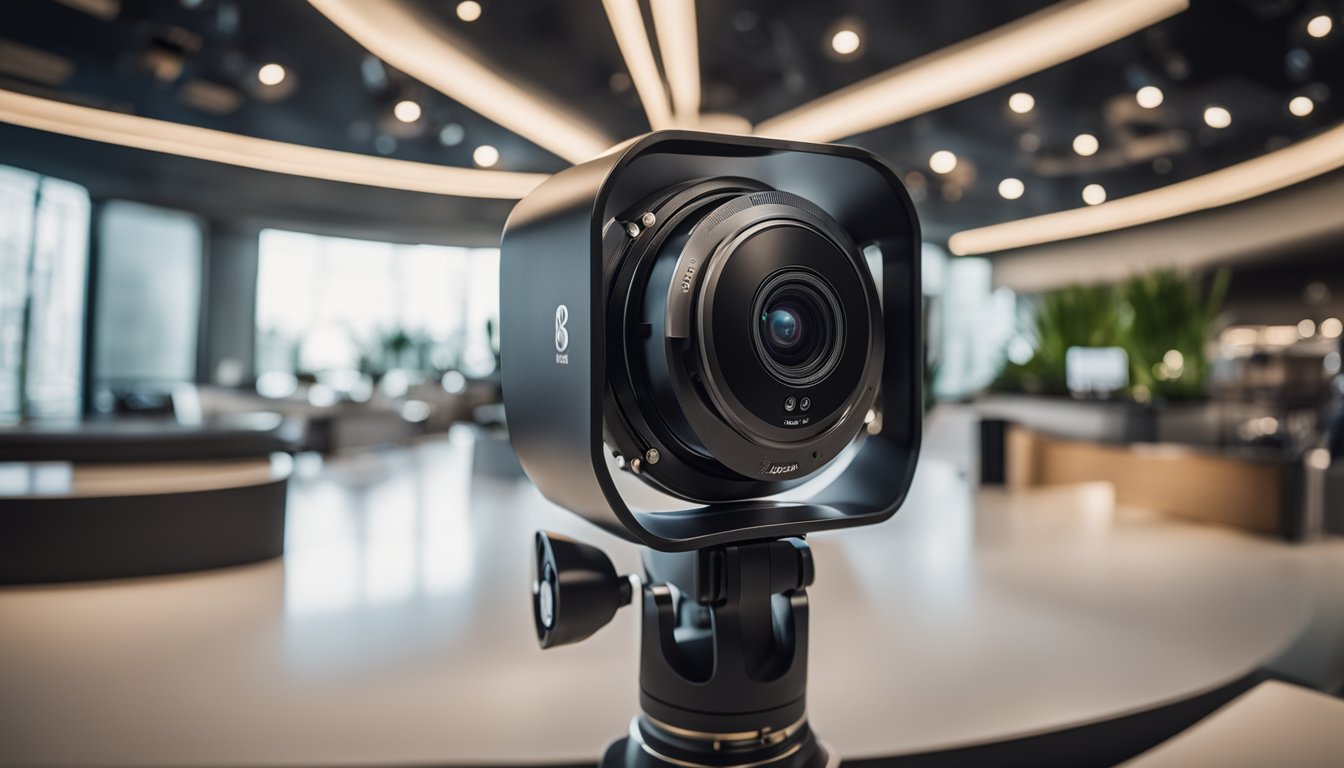
What are the top free 360 camera apps available for iPhones?
If you’re an iPhone user and want to capture 360-degree photos, there are several free apps available on the App Store. Some of the popular ones include Google Street View, Cardboard Camera, and Panorama 360 Camera. These apps allow you to capture 360-degree photos and share them with your friends and family.
How can I capture a 360 photo using my Android device?
If you’re an Android user, you can use the Google Street View app to capture 360-degree photos. Simply open the app, tap the camera icon, and start capturing your surroundings. You can also use the Cardboard Camera app to capture VR photos that you can view in virtual reality.
Are there any 360 panorama viewer tools that I can use for free?
Yes, there are several free 360 panorama viewer tools available online. Some of the popular ones include Kuula, Roundme, and 360Cities. These tools allow you to upload your 360-degree photos and view them in a panoramic view.
What’s the difference between a standard panorama and a full 360 photo?
A standard panorama is a wide-angle view of a scene, usually captured by stitching multiple photos together. A full 360 photo, on the other hand, captures the entire scene in all directions, allowing you to look up, down, and all around.
Can I convert my existing panorama pictures into 360 views?
Yes, there are several tools available that allow you to convert your existing panorama pictures into 360-degree views. Some of the popular ones include Pano2VR and Hugin. These tools allow you to stitch your photos together and create a 360-degree view.
Which app is recommended for creating virtual tours with a 360 camera?
If you want to create virtual tours using your 360-degree photos, you can use the Tour Creator app by Google. This app allows you to create virtual tours by adding your 360-degree photos, adding points of interest, and creating annotations. You can then share your virtual tours with your friends and family.








